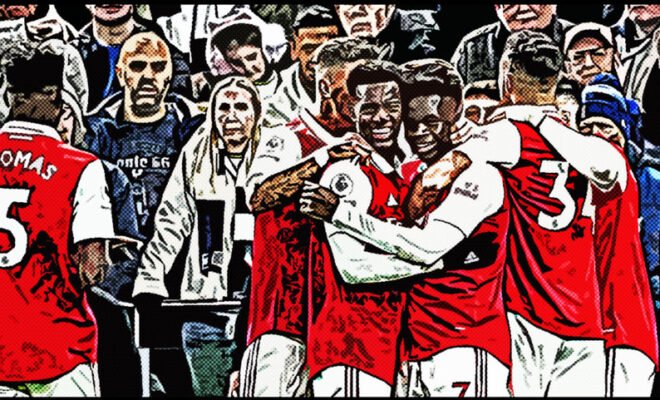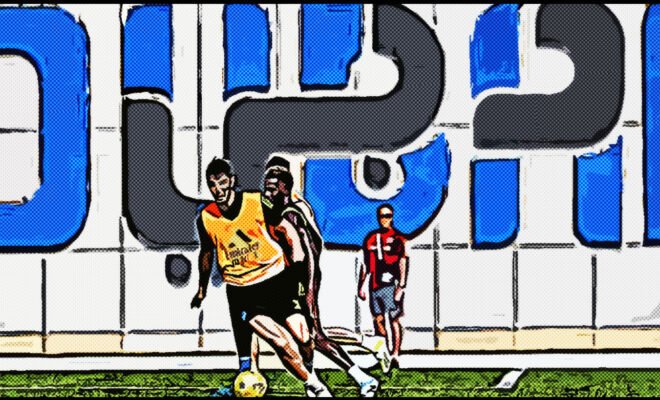What Can Arsenal Learn About Moving Forward By Looking Back?

In athletics in general, standing still means generally going in the wrong direction. Pushing forward and gauging at what the future of the sport might be doing one or two seasons down the road is essential to staying competitive.
It is assumed that typically if one looks further and further back into the mists of time to past glory days, there is less and less to see how a team can change for the better at this very moment. However, this is not true. No doubt the game has changed plenty since 1886, when ‘Royal Arsenal’ first formed, but the importance of organization and professionalism even at that early date certainly made the difference.
Arsenal’s ‘competent’ current season can be improved not by looking back at how the game was played a century or decades ago but can be improved by looking back at how managers and coaches thought about the game in years past.
A Different Game… Or Was It?
When you read that Arsenal’s first bout with a sustained period of success was back in the 1930s, it’s tempting to look at it as a bygone era. But it was actually the first ‘superstar era’ in English football. There are several very good reasons why a bust of Herbert Chapman resides inside Emirates Stadium.
When he became manager in 1925 he wasted little time in cultivating young players and bringing in already-made stars. One hundred years ago, a physiotherapist was a relatively new profession, but Chapman hired Tom Whittaker (a former player), and he changed the way footballers exercised, trained, and prepared. Whittaker also became a manager himself of Arsenal decades later, winning several champions again. Chapman also took input from others, and alongside Charles Buchan introduced the ‘WM formation’ when the league changed the offside rules.
All this work paid off, and starting in 1930, Arsenal began an unprecedented run-off success, winning five league championships and several FA Cups. While they spent plenty, all those wins meant people came in droves to watch them, so they made plenty as well.
At one point the team became known as ‘the Bank of England’ club. Even an underground station was named after the team. They were absolutely the equivalent of an Arsenal squad we will be talking about later, with fans partying into the night, toasting their constant success (and even back then you can believe that every Central London escort got rave reviews on match day).
During the Second World War more players from Arsenal died in battle than any other top club, but they still managed to win three league championships in the first six years of its return in the late forties and early fifties, thanks largely in part to the system that Herbert Chapman built.
The Fallow Years
If there is anything to learn from this time, it’s patience, but that’s part of the luxury of looking back and knowing (and believing) that success ultimately would return. After winning the championship in 1953, it would be nearly two decades before another FA cup win.
By this time the players themselves were much older, and there wasn’t a bastion of fresh talent to replace them. Managers came and went, some former players and some who had other positions in the club, but nothing came of it. Not until the early seventies, when they won their first double (winning the League and the FA Cup in the same season), and after that, it was another long stretch of mediocrity.
“The Invincibles”
Without question, if we are to look at times of undeniable success with Arsenal FC, there is something reassuring in the fact that we don’t have to go back very far. When Arsene Wenger became the manager in 1996, it began an incredible ten-year streak of success that still has people frothing over today.
The highlight statistic today is Forty-nine unbeaten matches, and it wasn’t like they were naif on either side of that. It began in the back end of the 2002-2003 season (when they won every home game and the FA Cup Final) and continued right through the entire 2003-2004 season, effortlessly becoming Premier League champions in April. Much like Herbert Chapman all those years ago, Wenger did more than anyone person to transform the Premier League – not just Arsenal – into what it is today.
His focus was on players, both their individual and combined strength and less on routes drawn up on a chalkboard. This is not to say that he was not unmindful of the importance of particular formations – he chiefly utilized 4-4-2 because of how much space it can cover – but he knew the importance of applying them when he had the right set of players to maximize its potential.
This meant cultivating players from the very start of their careers, not just paying massive salaries for established stars. Not only does this help keep general costs down, but it installs a sense of loyalty for the players that you’ve brought up and groomed within the Arsenal system.
Wenger pioneered focusing on the players’ health and activities off the field as well. His time in Japan as manager of Nagoya Grampus Eight inspired him to push for having dieticians and osteopaths keep a close eye on the eating habits and exercises of his players. Many observers saw a definite connection to these changes and how Arsenal had a very energetic second half in their successful seasons under Wenger.
Looking Towards the Future
It took five years after the hiring of Herbert Chapman for Arsenal to begin their first historic run of wins, and while Wenger did well early on, it wasn’t until seven years into his run that ‘The Invincibles’ name took hold. Without a doubt, the lesson to be learned here is patience, open-mindedness, and make sure you have young players who can’t wait to prove themselves on the pitch.
Leave a reply
You must be logged in to post a comment.







